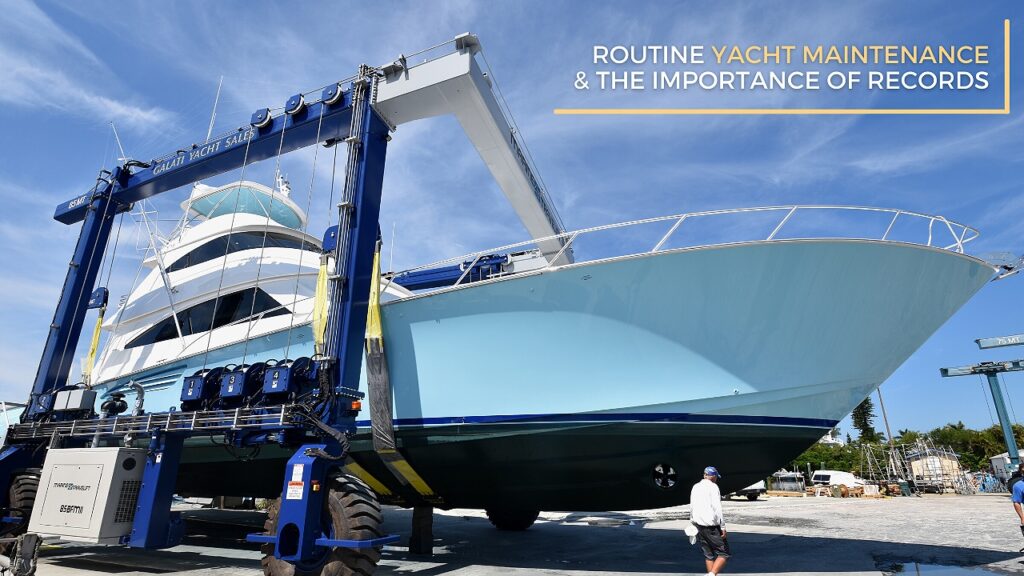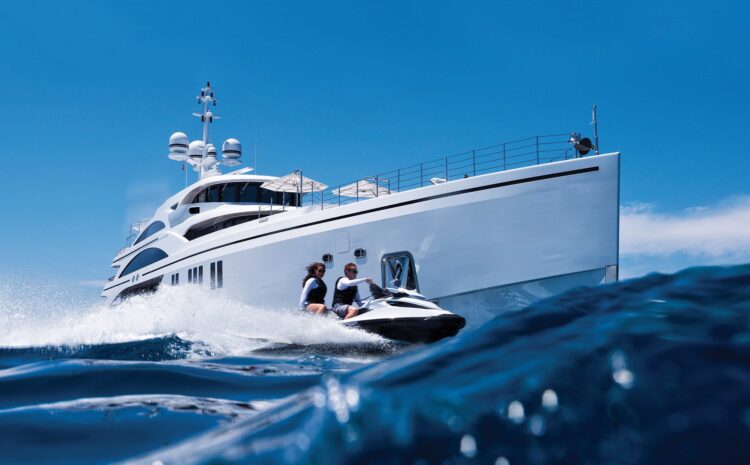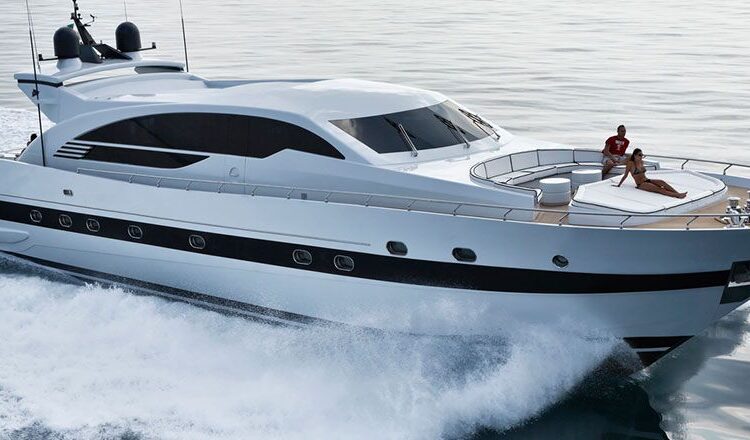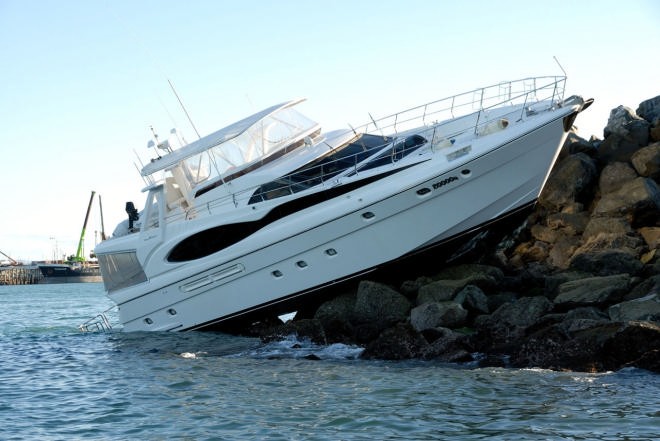
Yacht Maintenance Tips: How to Keep Your Vessel in Top Condition
Whether you are a seasoned sailor or a new yacht owner, maintaining your vessel is an essential part of boat ownership. Regular yacht maintenance not only helps to keep your vessel in top condition, but it also helps to ensure your safety and the safety of your passengers while on board. In this article, we’ll provide you with a comprehensive guide to yacht maintenance and offer tips on how to keep your vessel in top condition. From cleaning and washing to engine and electrical system maintenance, we’ll cover everything you need to know to keep your yacht looking and performing its best. So, let’s get started!
Founded in 2018, InLuxuss Insurance Group is a brokerage powerhouse that prides itself on an unwavering commitment.
Regular Cleaning and Washing
Keeping your yacht clean and free of debris is an essential part of maintaining your vessel’s appearance and preventing damage. Here are some tips on how to properly clean and wash your yacht:
-
Importance of regular cleaning: Regular cleaning not only helps to maintain your yacht’s appearance but also prevents dirt, grime, and salt buildup from causing damage to the vessel’s surfaces.
-
Tips for cleaning and washing your yacht: When cleaning your yacht, it’s important to start from the top and work your way down to avoid missing any spots. Use mild, environmentally friendly cleaning products that won’t damage the boat’s surfaces or harm marine life. Pay special attention to the areas that are most prone to buildup, such as the hull, decks, and cockpit.
-
Recommended products and tools: Some recommended cleaning products for yachts include boat soap, soft-bristled brushes, microfiber towels, and non-abrasive cleaners. It’s important to avoid harsh cleaning chemicals or abrasive tools that could scratch or damage your yacht’s surfaces.
By following these tips for regular cleaning and washing, you can help keep your yacht looking great and prevent long-term damage to your vessel.
Check and Maintain the Electrical Systems
Your yacht’s electrical system is essential for powering everything from navigation equipment to lighting and entertainment systems. It’s crucial to ensure that these systems are in proper working condition to avoid any electrical mishaps while out on the water.
Importance of electrical system maintenance: Regularly checking and maintaining your electrical systems not only ensures your safety but also prolongs the lifespan of your yacht. Failing to do so can result in costly repairs, safety hazards, and even fires.
How to check and maintain the electrical systems on your yacht:
- Check your battery: Your battery is the lifeblood of your yacht’s electrical system. Ensure that it’s properly charged, and the terminals are free of corrosion.
- Inspect your wiring: Make sure your wiring is in good condition, with no signs of wear and tear, loose connections, or exposed wires.
- Test your electrical components: Regularly testing your electrical components, such as your navigation equipment, lighting, and entertainment systems, can help identify any issues early on.
Common issues and troubleshooting tips:
- Blown fuses: Replace the blown fuse with the appropriate size and type.
- Corrosion: Clean the affected area with a wire brush and apply a corrosion inhibitor.
- Dead battery: Recharge the battery or replace it if necessary.
By regularly checking and maintaining your yacht’s electrical systems, you can prevent issues and ensure a safe and enjoyable experience out on the water.
Engine Maintenance
Proper engine maintenance is crucial to ensure your yacht operates smoothly and efficiently. Neglecting your engine can lead to costly repairs and even safety hazards. Here are some tips to keep your engine in top condition:
-
Regularly change the oil and filters: Changing the oil and filters at the recommended intervals is essential to keeping your engine running smoothly. Neglecting this maintenance can cause engine damage or failure.
-
Check the belts and hoses: Inspect the belts and hoses regularly for signs of wear and tear. Replace any that appear damaged or worn.
-
Keep the engine clean: A clean engine runs cooler and is less prone to overheating. Use a soft brush and soapy water to clean the engine and remove any debris.
-
Check the cooling system: Make sure the cooling system is working properly and that there are no leaks or blockages.
-
Use high-quality fuel: Using clean, high-quality fuel is essential for your engine’s performance and longevity.
If you notice any issues with your engine, it’s important to address them promptly to prevent further damage. Common problems include overheating, low oil pressure, and unusual noises. Don’t hesitate to consult with a professional mechanic if you’re unsure about any maintenance or repair tasks.
Maintain the Hull and Bottom
Your yacht’s hull and bottom are constantly exposed to the harsh marine environment, and neglecting their maintenance can lead to significant damage. Regular maintenance can prevent corrosion, fouling, and other issues that can compromise your yacht’s performance and value.
Importance of maintaining the hull and bottom of your yacht
Regular maintenance of the hull and bottom is crucial for the longevity and overall performance of your yacht. Failing to maintain these areas can result in costly repairs and even more significant damage to your vessel.
Tips for cleaning and maintaining the hull and bottom
- Regularly clean the hull and bottom of your yacht to prevent fouling, which can lead to increased drag and reduced fuel efficiency.
- Use specialized cleaners and brushes that are designed for marine use.
- Inspect your yacht’s hull and bottom for any damage or signs of wear regularly. If you find any issues, address them immediately to prevent further damage.
- Consider applying an antifouling coating to prevent the buildup of marine organisms on the bottom of your yacht.
Common issues and how to fix them
One of the most common issues with the hull and bottom of a yacht is osmosis. This occurs when water penetrates the hull, causing blistering and other types of damage. To fix osmosis, you may need to sandblast the hull, apply a barrier coat, and then repaint it.
Another common issue is damage from grounding or collision. In such cases, it’s essential to inspect the hull thoroughly for damage. If there are any cracks or other types of damage, you should have a professional repair them as soon as possible to prevent further damage.
Regular maintenance of the hull and bottom of your yacht is essential to ensure the longevity and overall performance of your vessel. By following these tips and addressing any issues immediately, you can keep your yacht in top condition for years to come.
Interior Maintenance
Maintaining the interior of your yacht not only ensures its aesthetic appeal but also extends the life of the vessel. Here are some tips for keeping the interior in top condition:
- Regularly clean all surfaces, including upholstery, carpets, and curtains, to prevent dirt and stains from accumulating. Use mild cleaning products and avoid harsh chemicals that can damage the materials.
- Keep the air conditioning and ventilation systems clean and in good working order to maintain a comfortable and healthy living environment on board.
- Check and maintain the plumbing and water systems to prevent leaks and water damage. Regularly flush the freshwater system to prevent the buildup of bacteria and mineral deposits.
- Store all items in their proper place and secure loose items before setting sail to prevent damage caused by movement and vibration.
By following these tips, you can ensure that your yacht’s interior remains in pristine condition, providing a comfortable and enjoyable environment for you and your guests.
Safety Equipment Maintenance
As a responsible yacht owner, ensuring the safety of your passengers and crew should always be a top priority. One way to achieve this is by regularly checking and maintaining the safety equipment on your vessel.
It’s important to note that safety equipment requirements may vary depending on your location and the size of your yacht, so make sure to check your local regulations and consult with a professional if necessary.
Here are some tips on how to check and maintain safety equipment on your yacht:
-
Life Jackets: Check that you have enough life jackets on board for all passengers and crew, and that they are in good condition. Inspect the straps, buckles, and zippers, and replace any damaged or worn out jackets. It’s also a good idea to periodically test the buoyancy of the jackets.
-
Fire Extinguishers: Ensure that you have the correct type and number of fire extinguishers on board, and that they are easily accessible. Check the pressure gauge and inspect the hose and nozzle for any damage or corrosion. Replace or refill any extinguishers that are expired or used.
-
Flares: Make sure that you have the appropriate type and quantity of flares on board, and that they are in good condition. Check the expiration date and replace any expired flares. It’s also important to know how to use flares properly in case of an emergency.
-
Emergency Beacon: Consider investing in an emergency beacon, such as an EPIRB or PLB, that can transmit your location in case of an emergency. Check that the battery is fully charged and test the device periodically.
In addition to regular checks, it’s also important to keep your safety equipment in a designated and easily accessible location. Make sure that all passengers and crew are aware of the location of the safety equipment and how to use it in case of an emergency.
By following these tips and regularly maintaining your safety equipment, you can ensure a safe and enjoyable yachting experience for all on board.
Conclusion
In conclusion, maintaining your yacht is not just a matter of aesthetics but also of safety and performance. By following these tips, you can keep your vessel in top condition and enjoy it for years to come. Remember to perform regular cleaning and washing, check and maintain the electrical systems, keep your engine in good shape, maintain the hull and bottom, take care of the interior, and check and maintain safety equipment. Use recommended products and tools, and don’t hesitate to seek professional help if needed. Your yacht is an investment that deserves proper care and attention. Happy sailing!





